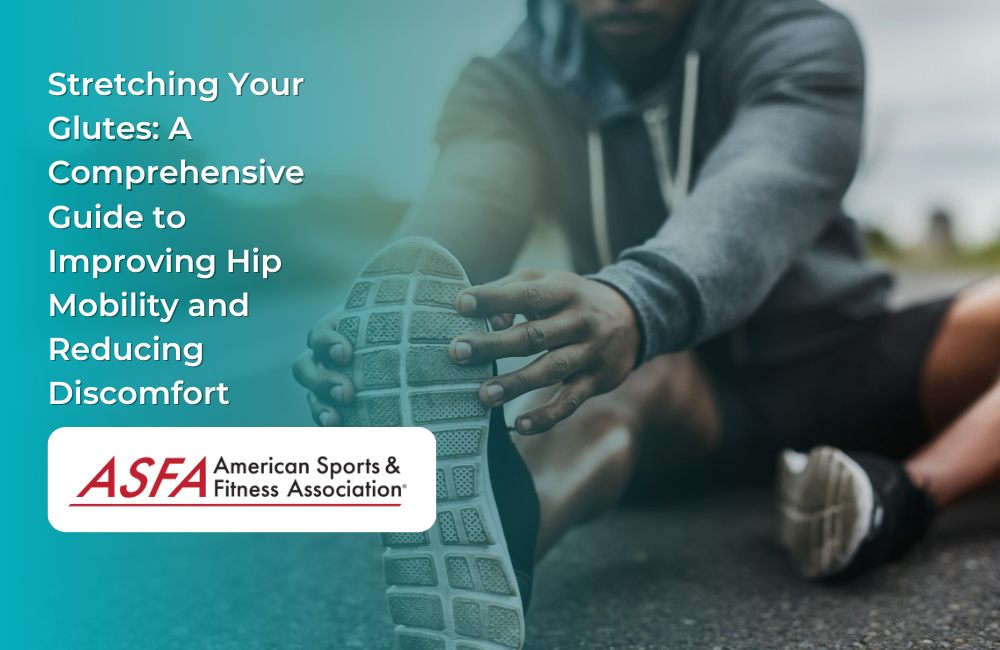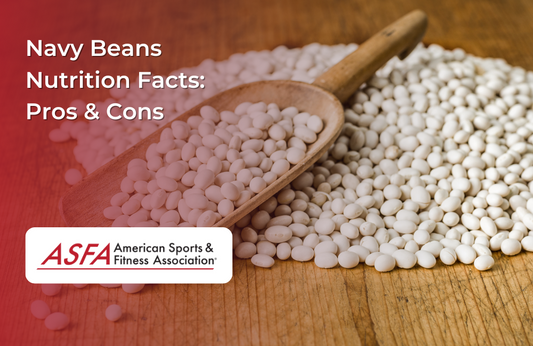Stretching the glutes, a powerful group of muscles located in the buttocks, is essential for maintaining hip mobility, improving athletic performance, and alleviating discomfort caused by tightness or muscle imbalances. The gluteal muscles include the gluteus maximus, gluteus medius, and gluteus minimus, all of which play a significant role in stabilizing the hips and supporting movements such as walking, running, and squatting. The American Sports and Fitness Association (ASFA) emphasizes the importance of proper glute stretching techniques as part of a balanced fitness routine. In this detailed guide, we'll walk through various glute stretches, their benefits, safety considerations, and how to effectively incorporate them into your daily fitness regimen for better hip health and overall well-being.
Understanding Glute Tightness
Glute tightness is a common issue that can affect anyone, regardless of their fitness level or activity. It occurs when the glute muscles, including the gluteus maximus, gluteus medius, and gluteus minimus, become shortened and stiff. This can lead to a range of problems, including limited mobility, pain, and discomfort in the buttocks, hips, and lower back.
Several factors can contribute to glute tightness. Prolonged sitting is a major culprit, as it keeps the glute muscles in a shortened position for extended periods. Overuse from activities like running or weightlifting without adequate recovery can also lead to tight glutes. Injuries and muscle imbalances, where certain muscles are overactive while others are underactive, can further exacerbate the issue. Additionally, not incorporating enough recovery time and neglecting to stretch the glutes after workouts can contribute to muscle tightness.
The Importance of Glute Stretching
-
Enhancing Hip Mobility
-
Glute stretches are key to improving the flexibility of the hip joint. Since the glutes are responsible for extending and rotating the hip, stretching these muscles ensures smooth movement during various physical activities, from daily tasks to athletic performances. Improved hip mobility also helps prevent injury by allowing your body to move through a full range of motion without unnecessary strain on the joints. Positioning the left foot correctly during stretches can significantly improve balance and stability.
-
Reducing Discomfort and Alleviating Tightness
-
Tight glutes can cause significant discomfort, often leading to lower back pain, hip stiffness, and even knee issues. This tightness commonly arises from prolonged sitting, overtraining, or improper posture. Regularly stretching the glutes helps alleviate this discomfort by loosening tight muscles, improving circulation, and reducing tension, particularly for those who spend long hours sitting at a desk. Properly positioning the right knee during stretches is crucial for enhancing flexibility and relieving tension in the targeted areas.
-
Correcting Muscle Imbalances
-
Muscle imbalances occur when certain muscle groups become overactive or underactive compared to others, often resulting in poor posture, movement inefficiencies, and increased injury risk. Since the glutes are major stabilizers of the hips and pelvis, stretching them can correct imbalances by ensuring the glutes work in harmony with surrounding muscles, such as the hamstrings, quadriceps, and lower back.
Benefits of Glute Stretches
Incorporating glute stretches into your fitness routine offers a multitude of benefits. One of the primary advantages is the relief of muscle tightness and soreness. Regularly stretching your glutes can improve your overall mobility and flexibility, allowing for a greater range of motion in your hips. This is particularly beneficial for athletes, as enhanced flexibility can lead to better performance and reduced risk of injury.
Glute stretches also play a crucial role in alleviating lower back pain and hip stiffness. By keeping the glutes flexible, you support their function in everyday activities such as standing up from a sitting position, climbing stairs, and maintaining an upright posture. This not only helps in daily tasks but also contributes to overall strength and power in physical activities.
Static vs. Dynamic Glute Stretches
-
Static Stretches
-
Static stretches involve holding a stretch for an extended period, typically 20-30 seconds, without moving. These stretches are ideal for lengthening the muscles and improving flexibility. When performing static stretches, you should gently pull the muscle to enhance the stretch while ensuring safety and comfort. Static glute stretches should be performed after a workout when the muscles are warm, as they promote relaxation and muscle recovery.
-
Dynamic stretches incorporate movement and are often used as part of a warm-up routine. These stretches mimic the movements you’ll perform during exercise and help to prepare the muscles by increasing blood flow and flexibility. Dynamic glute stretches are perfect before activities like running, jumping, or weightlifting, as they activate the glutes and other surrounding muscles.
Preparing for Glute Stretching
-
Warm-Up: Preparing Your Muscles
-
Before diving into glute stretches, it’s essential to warm up your muscles. A proper warm-up increases blood flow, raises body temperature, and prepares the muscles for stretching. Light aerobic exercises such as walking, cycling, or jogging are excellent ways to get the body moving. Dynamic stretches can also serve as a warm-up, particularly if you’re about to engage in an activity that requires strong hip mobility. Remember to keep your spine straight during these exercises to ensure proper alignment and effectiveness.
-
Gradual Progression: Avoiding Injury
-
When performing any type of stretch, it’s crucial to start slow and gradually increase the intensity. Stretching too forcefully can cause muscle strains, tears, or other injuries. Begin with gentle movements and ease into the stretch, focusing on maintaining proper form and alignment.
Detailed Gluteus Maximus Stretching Techniques
-
Standing Glute Stretch (Figure-Four Stretch)
-
How to perform:
-
Stand tall with your feet hip-width apart.
-
Cross one ankle over the opposite knee, creating a figure-four shape.
-
Bend the supporting leg and sit back as if you’re sitting in a chair, keeping your chest upright. Ensure your foot is flat on the floor to maintain proper form and alignment. You should feel a deep stretch in the glute of the crossed leg.
-
Hold the stretch for 20-30 seconds, ensuring that you maintain proper balance, then switch to the other leg.
-
Benefits:
-
This stretch effectively targets the gluteus maximus while also opening up the hip joint.
-
It improves balance, flexibility, and mobility, making it ideal for athletes and individuals who perform dynamic leg movements.
-
Seated Glute Stretch
-
How to perform:
-
Sit on the floor with both legs extended straight in front of you.
-
Bend one knee and place the ankle of that leg over the opposite knee, creating a cross-legged position.
-
Gently press the crossed knee downward while keeping your back straight. Ensure your left knee is positioned correctly to enhance the stretch. You should feel a deep stretch in the glute of the crossed leg.
-
Hold the stretch for 20-30 seconds before switching to the other leg.
-
Benefits:
-
This stretch isolates the glutes and is particularly useful for those who spend long hours sitting, as it helps alleviate tightness and reduce tension in the hips.
-
It is a beginner-friendly stretch that can be performed anywhere, including at home or at the office.
-
Pigeon Pose (Yoga Stretch)
-
How to perform:
-
Begin in a plank position with your hands directly under your shoulders.
-
Bring one knee forward, placing it behind your corresponding hand, and position your shin parallel to the front of your mat.
-
Extend the opposite leg straight behind you, ensuring that your hips remain square to the floor. Ensure your left leg is extended straight behind you and your left thigh is properly aligned.
-
Slowly lower your torso toward the ground, stretching the glute of the bent leg. Position your right leg correctly to achieve an effective stretch.
-
Hold the stretch for 20-30 seconds before switching sides.
-
Benefits:
-
The pigeon pose is a popular yoga stretch that deeply targets the glutes, hip flexors, and lower back.
-
It also helps improve hip mobility, reduce lower back pain, and release tension in the glutes after intense activities such as running or cycling.
Safety Considerations
-
Listening to Your Body: Preventing Overstretching
-
While stretching is beneficial, it's important not to push your body beyond its limits. Stretching should never cause sharp or intense pain. If you experience discomfort, ease up on the stretch and reassess your form. Always listen to your body's signals to prevent injury.
-
-
Proper Alignment: Ensuring Effective Stretching
-
Maintaining proper alignment is crucial during glute stretches to avoid placing unnecessary strain on the knees or lower back. When performing stretches like the pigeon pose or seated glute stretch, make sure that your back is straight and your hips remain square to the floor to maximize the effectiveness of the stretch and minimize injury risk.
-
Stretching Frequency for Optimal Range of Motion Results
-
Daily Stretching: Building a Routine
-
For optimal flexibility and hip mobility, incorporate glute stretches into your daily fitness routine. Stretching your glutes regularly will not only help keep the muscles loose but also improve your overall range of motion. Even dedicating just 10-15 minutes a day to stretching can make a noticeable difference in how your hips feel and function.
-
-
Post-Exercise Stretching: Aiding Muscle Recovery
-
After workouts, make it a habit to perform static stretches targeting the glutes. Post-exercise stretching helps relax the muscles, release tension, and promote blood flow, aiding in faster recovery and preventing post-workout soreness.
-
Additional Tips for Tight Glutes Health
-
Strength Training: Complementing Stretching
-
In addition to stretching, incorporating glute-strengthening exercises into your workout routine is essential for overall hip health. Exercises like squats, lunges, glute bridges, and deadlifts not only build muscle but also enhance flexibility by increasing the muscles' capacity to contract and stretch effectively.
-
-
Maintaining Proper Posture: Reducing Stress on the Glutes
-
Good posture plays a significant role in keeping the glutes healthy. Whether standing, sitting, or moving, maintaining proper alignment in your spine, hips, and knees reduces unnecessary stress on the glutes and surrounding muscles. Aim to engage your core and avoid slouching to keep the pressure off your lower back and hips.
-
Common Mistakes to Avoid
When performing glute stretches, it’s important to avoid common mistakes that can hinder your progress or even cause injury. One of the most frequent errors is bouncing or overstretching. Stretching should be a controlled and steady process; bouncing can lead to muscle strains or further tighten the muscles. Always aim for a smooth, sustained stretch and avoid pushing your body beyond its limits.
Another mistake is neglecting to warm up before stretching. Warming up increases blood flow to the muscles, making them more pliable and reducing the risk of injury. Light aerobic exercises or dynamic stretches are excellent ways to prepare your muscles for stretching. Additionally, not holding the stretch for a sufficient amount of time can reduce its effectiveness. Aim to hold each stretch for at least 20-30 seconds to allow the muscles to lengthen properly.
Glute Stretches for Specific Activities
-
Glute Stretches for Runners
-
Dynamic stretches such as leg swings, high knees, and walking lunges are excellent for warming up the glutes before running. These movements activate the glutes and prepare them for repetitive impact, reducing the risk of injury.
-
-
Glute Stretches for Desk Workers
-
For those who sit for prolonged periods, performing seated glute stretches and standing figure-four stretches can help counteract tightness caused by inactivity. Regular stretching breaks during the workday can relieve tension in the glutes and prevent stiffness in the hips.
-
Stretching After Long-Distance Running
-
Cool-Down Routine: Promoting Recovery
-
After long-distance runs, cool down by incorporating static glute stretches to prevent muscle soreness and stiffness. Stretching the glutes after running aids in recovery by promoting blood flow to the muscles, helping to flush out lactic acid buildup, and reducing post-run tightness.
-
-
Stay Hydrated: Supporting Muscle Function
-
Proper hydration is essential for muscle health. Dehydration can lead to muscle cramps, tightness, and even injury. Drinking water before and after stretching ensures that your muscles remain flexible and function efficiently.
-
First Aid and Fitness Training
-
Comprehensive Fitness Approach
-
As part of ASFA's commitment to fitness and health education, understanding first aid and injury prevention is crucial. A well-rounded fitness routine should always incorporate knowledge of injury prevention, stretching, strength training, and recovery techniques to ensure long-term success and well-being.
-
Stretching the glutes is an essential part of maintaining hip mobility, improving athletic performance, and reducing muscle discomfort. Whether you choose static or dynamic glute stretches, incorporating these stretches into your daily fitness routine will enhance your hip health, prevent injury, and improve overall flexibility. With proper alignment, a gradual progression of intensity, and attention to safety, glute stretches can transform your fitness routine, leading to better movement, reduced discomfort, and a more balanced, active lifestyle.
Prioritize your hip health by making glute stretching an integral part of your fitness journey. With guidance from ASFA and this comprehensive guide, you can optimize your glute health and enjoy the long-term benefits of improved flexibility, reduced muscle tightness, and enhanced well-being. Whether you're a runner, desk worker, or fitness enthusiast, stretching your glutes regularly is key to maintaining healthy hips and a strong lower body.
Conclusion
Glute stretches are an essential part of any fitness routine, regardless of your fitness level or activity. By incorporating glute stretches into your routine, you can help to alleviate muscle tightness and soreness, improve mobility and flexibility, and reduce the risk of injury. Remember to avoid common mistakes such as bouncing or overstretching, and always warm up before stretching. With regular glute stretches, you can maintain glute function and flexibility, and improve your overall athletic performance. Prioritize your hip health by making glute stretching an integral part of your fitness journey.





